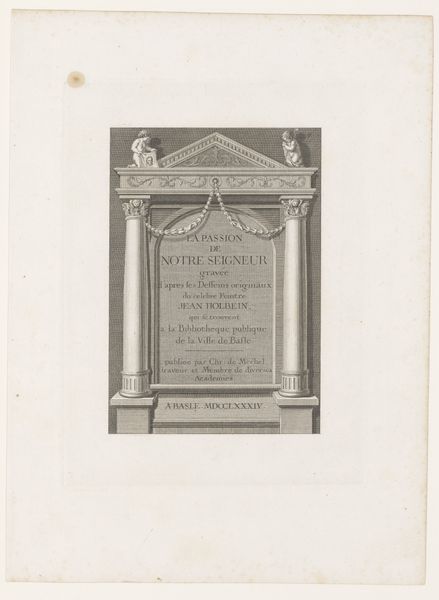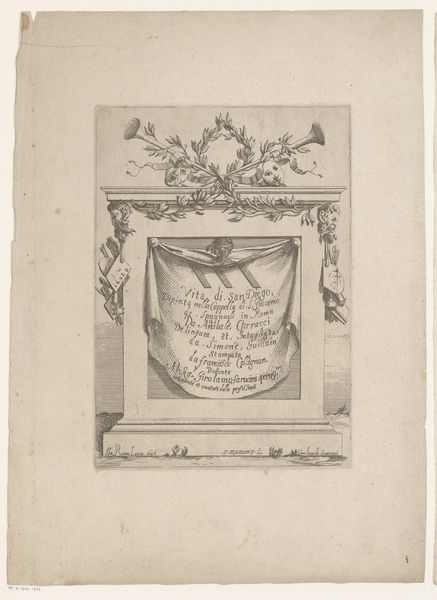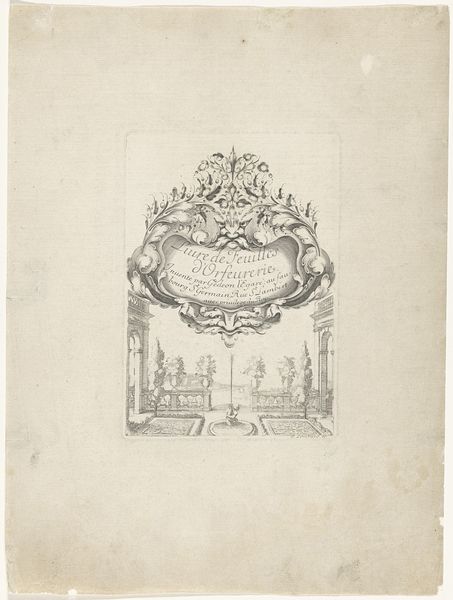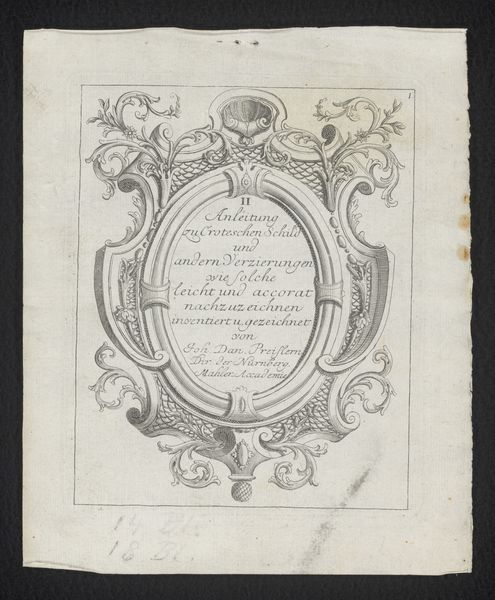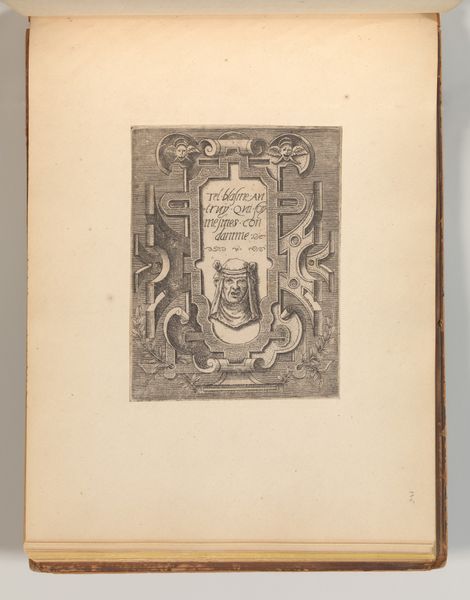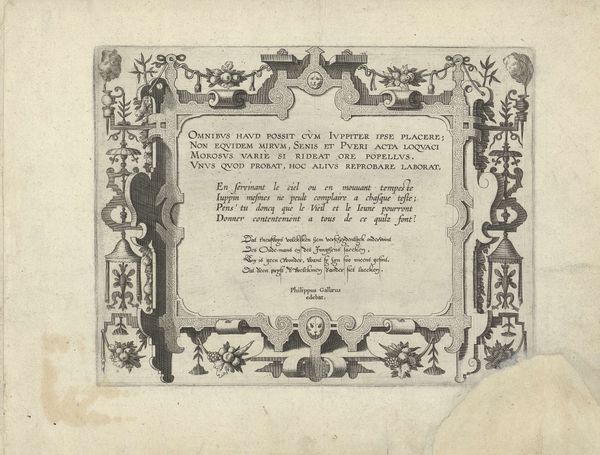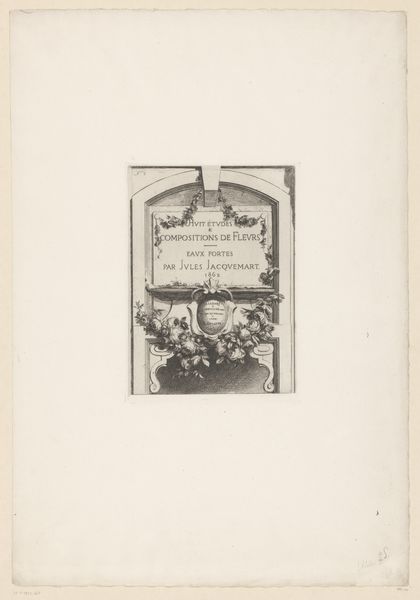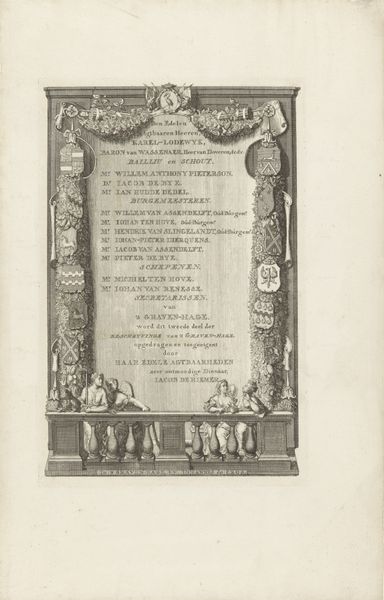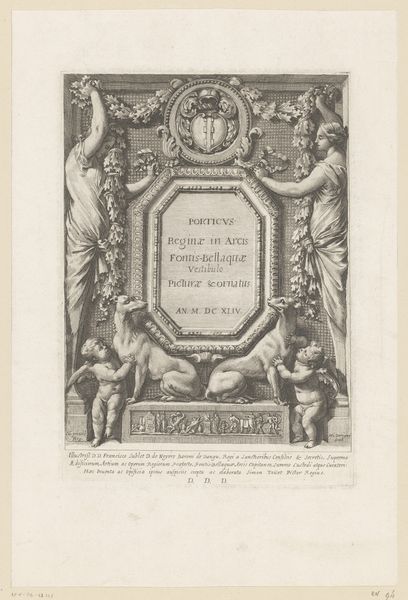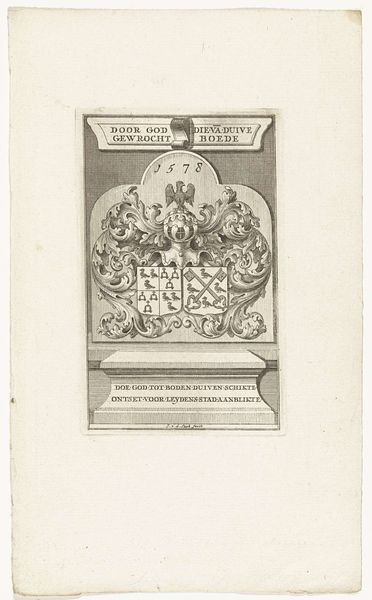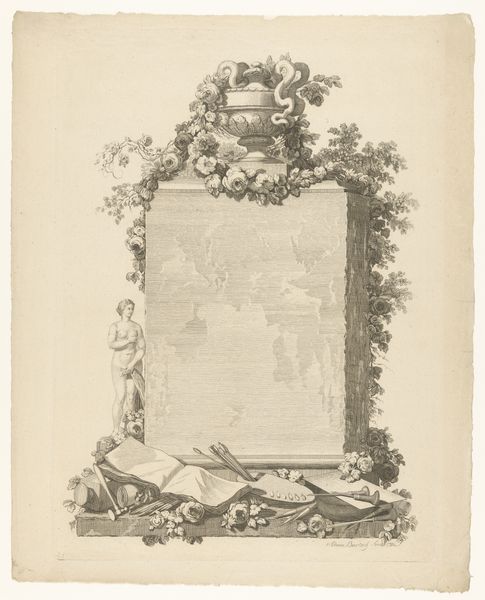
Dimensions: height 261 mm, width 190 mm
Copyright: Rijks Museum: Open Domain
Editor: We’re looking at “Titelpagina met sokkel,” created in 1773 by Joseph Anton Zimmermann, using tempera, print, etching, and engraving techniques. I’m struck by the symmetry and the clear division of space, almost like a theatrical stage. What do you see as the key elements of its composition? Curator: The most salient aspect is the intricate framing device, isn't it? Note how the architecture, flora, and figures cohere into a visually arresting enclosure for the textual element. The work operates on a semiotic level. The text it encircles clearly represents the central point. Consider, too, the textural interplay: the sharp lines of the inscription against the more fluid renderings of the figures. Editor: It’s interesting you bring up the textural contrasts. I was initially drawn to the figures themselves. What's your interpretation of the allegorical figures on either side of the frame? Curator: Are they truly distinct? Both women display very soft forms against an implied orthogonal depth, consider them, rather, as compositional devices to indicate symmetry, like counter-weights creating visual balance. Each element supports another structurally within the space. Editor: So, you’re saying that even seemingly representational elements function primarily in relation to the work's formal structure? That’s a completely different approach to the way I’d initially considered them! Curator: Precisely. By isolating the visual structure, we can analyze how Zimmermann creates meaning not through representation, but through form itself. Editor: I hadn't considered it that way, focusing on visual cues alone. I realize I’ve learned something important about observing how the aesthetic relationships construct new approaches. Curator: As have I. Our understanding is thus deepened.
Comments
No comments
Be the first to comment and join the conversation on the ultimate creative platform.
